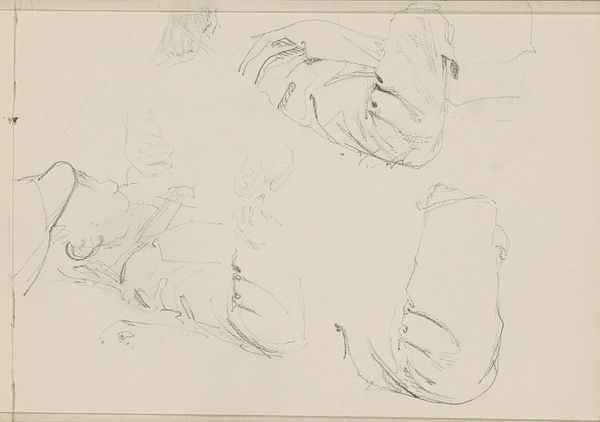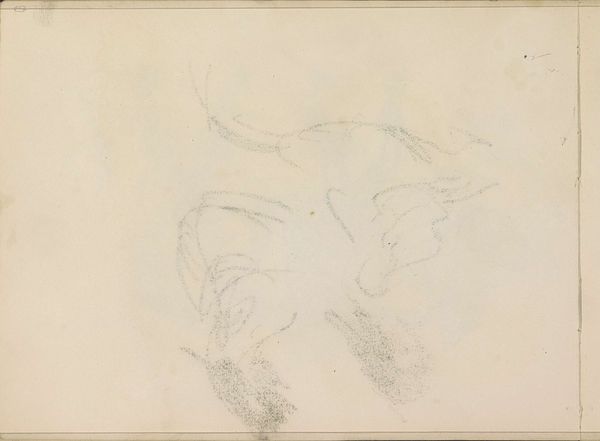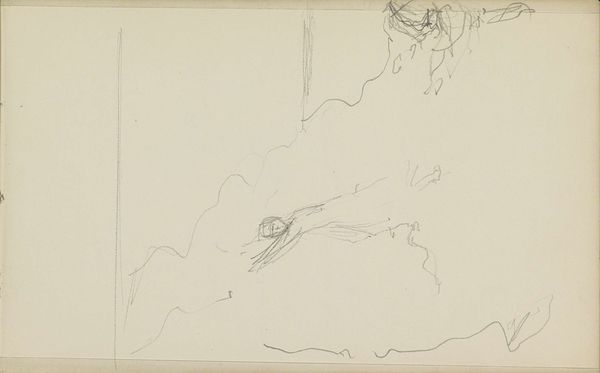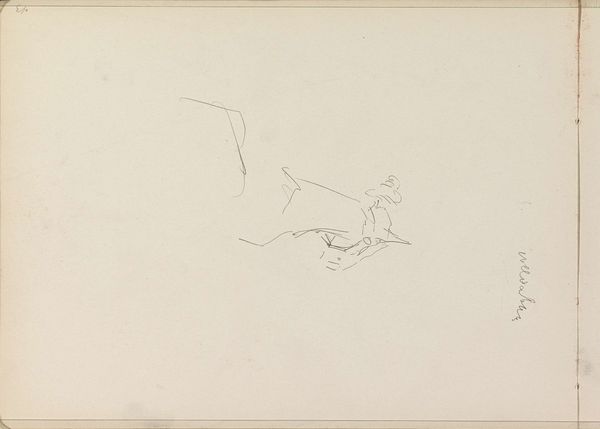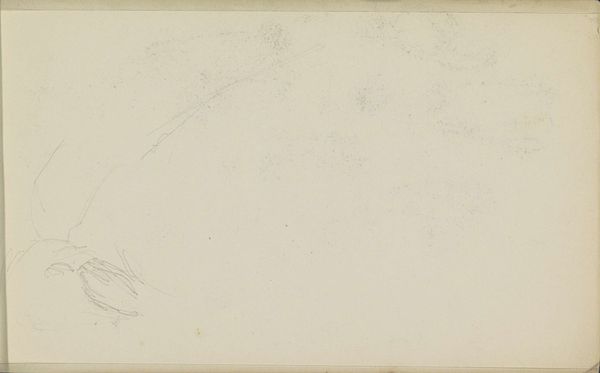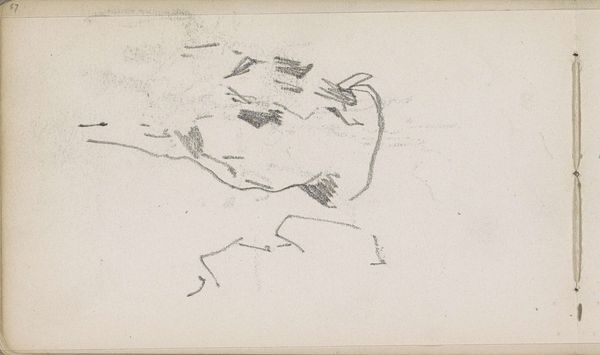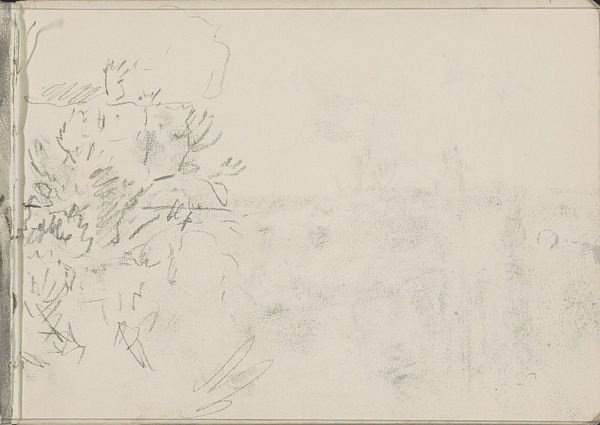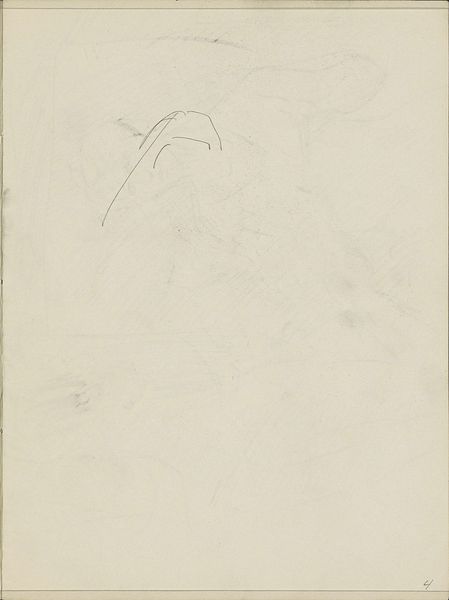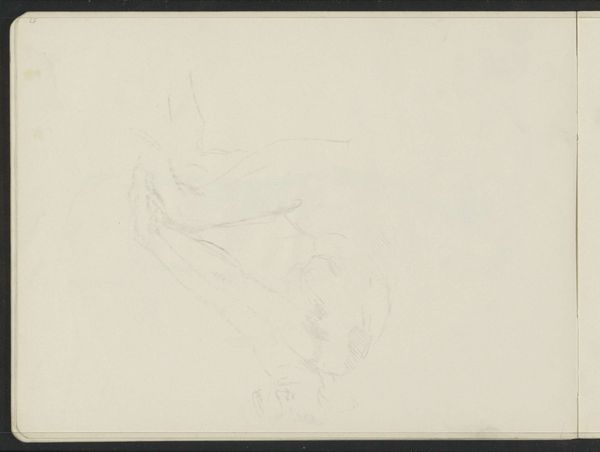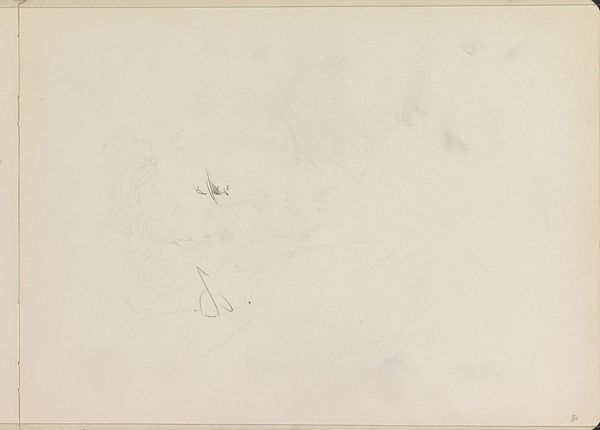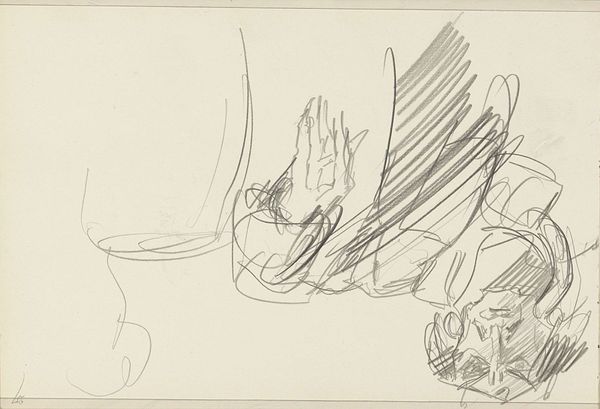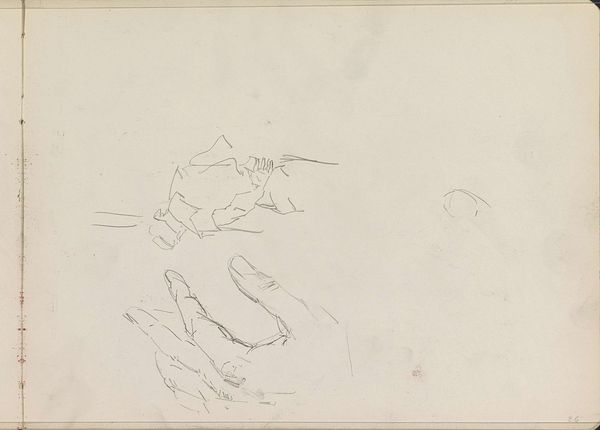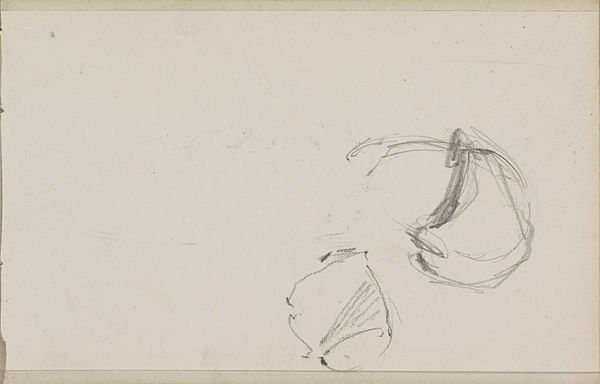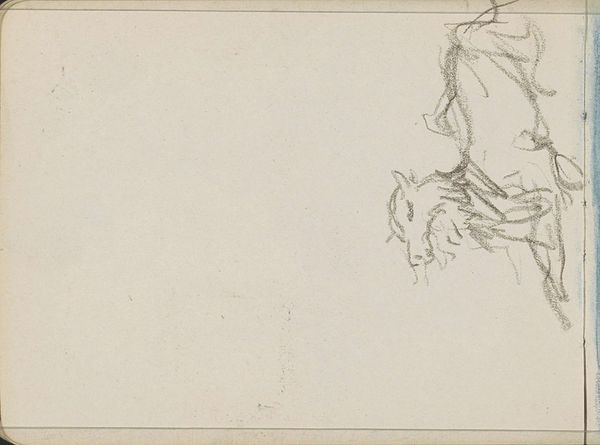
drawing, paper, pencil
#
portrait
#
drawing
#
pencil sketch
#
etching
#
figuration
#
paper
#
pencil
#
line
Copyright: Rijks Museum: Open Domain
Curator: This pencil sketch, “Figuur met een mantel met kap,” or “Figure in a Cloak with Hood” resides here at the Rijksmuseum. Attributed to Bramine Hubrecht, it likely dates between 1865 and 1913. Editor: It strikes me as an idea, captured fleetingly. Almost like a whisper on paper. Curator: Indeed. Hubrecht’s use of line is incredibly delicate, creating a sense of ethereality. The figure, enveloped in the cloak, almost merges with the paper. Hooded figures often speak of anonymity, or protection from the world, perhaps even a desire for introspection. Editor: Thinking about that cloak though, I'm wondering about its material. Was it homespun? Factory produced? The rough quality of the line hints at functionality over finery, so more likely it was made by the figure themselves or within their community. The very act of clothing, of providing shelter for the body, that labor holds meaning. Curator: That's a fascinating observation. It adds another layer to the potential meaning, connecting it to daily life and labour of the sitter. Perhaps that's why she employs these seemingly hidden strokes, barely there on the paper. The artist refrains from glorifying or idealizing her subject, presenting them as a worker and common person rather than royalty. Editor: Exactly. The type of pencil too. Was it locally sourced graphite? Or imported, already suggesting access and privilege? I see it connecting to a whole economy of materials and techniques available at that time, that's accessible to few. It isn’t just a drawing, but evidence of social context. Curator: That's right. The anonymity also reminds us that memory is shaped not just by great leaders or innovators, but by countless lives lived. The drawing technique with a specific emphasis on figuration makes one question which histories we tell and what the cultural impact is from that perspective. Editor: Well, now when I look, it appears that its modesty only enhances the complexity and reminds me of how so many historical records disregard working figures' stories in favor of the high and mighty. Curator: Yes, this sketch holds unexpected weight and meaning beneath the subtle markings on paper. Editor: A testament to how even the simplest of means and materials can tell such expansive tales about our lives.
Comments
No comments
Be the first to comment and join the conversation on the ultimate creative platform.
